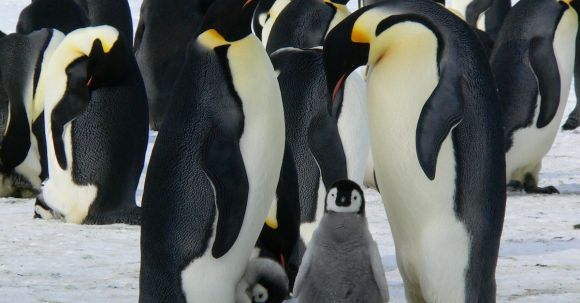Penguins are fascinating creatures that have adapted to survive in the extreme cold of Antarctica. Despite the freezing temperatures and harsh conditions, these flightless birds are able to stay warm and thrive in their icy environment. In this article, we will explore the unique ways in which penguins keep warm in Antarctic temperatures.
Insulated Feathers
One of the primary reasons penguins are able to withstand the cold is due to their specialized feathers. Unlike the feathers of most birds, penguin feathers are small, dense, and overlap each other, creating a thick layer of insulation. This insulation helps to trap warm air close to the penguin’s body, preventing heat loss.
The feathers are also coated in a layer of oil, which makes them waterproof. This oil prevents the feathers from becoming waterlogged when penguins swim in the frigid Antarctic waters. By staying dry, penguins are able to maintain their body temperature and avoid hypothermia.
Blubber Layer
In addition to their feathers, penguins have a layer of blubber, or fat, beneath their skin. This layer acts as another form of insulation, providing extra warmth in the cold Antarctic climate. The blubber helps to retain heat and acts as an energy reserve, especially when food is scarce during the breeding season.
Huddling Behavior
To further conserve heat, penguins engage in a behavior known as huddling. When temperatures drop, penguins gather together in large groups, huddling closely to share body heat. This collective warmth helps them to stay comfortable and reduces heat loss. The penguins take turns being on the outermost layer of the huddle, rotating positions to ensure that every bird gets a chance to benefit from the warmth of the group.
Counter-Current Heat Exchange
Another fascinating adaptation that penguins possess is a unique blood vessel system known as counter-current heat exchange. This system helps to prevent heat loss through their feet and flippers, which are in direct contact with the cold ice and water.
The arteries and veins in a penguin’s legs are positioned close together, allowing warm blood to flow past cold blood and transfer heat. This ingenious mechanism ensures that the penguin’s core body temperature remains constant, even in freezing conditions.
Heat Regulation
Penguins are also efficient at regulating their body temperature. When the weather becomes too warm, they are able to cool down by panting, similar to dogs. By panting, penguins can release excess heat and maintain a comfortable body temperature.
Furthermore, penguins have the ability to reduce blood flow to their extremities when necessary, such as when they are swimming in cold water. By redirecting blood flow to their vital organs, penguins can conserve heat and ensure their survival in the freezing Antarctic environment.
Conclusion
In conclusion, penguins have evolved a range of remarkable adaptations to survive in the Antarctic temperatures. From their insulated feathers and blubber layer to their huddling behavior and counter-current heat exchange system, these birds have found ingenious ways to stay warm and thrive in one of the harshest environments on Earth.
By understanding the unique strategies that penguins employ to keep warm, we can gain a deeper appreciation for the incredible resilience and adaptability of these fascinating creatures. Whether waddling on land or gliding through icy waters, penguins are a testament to the wonders of nature and the power of adaptation.





